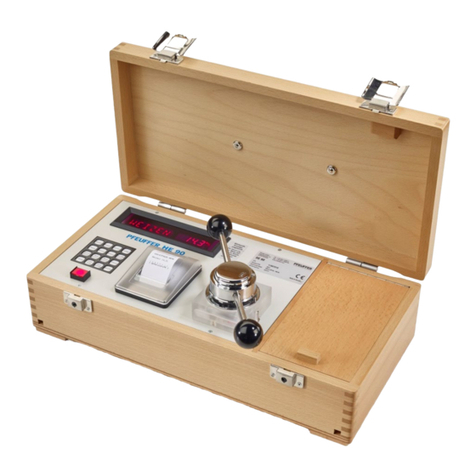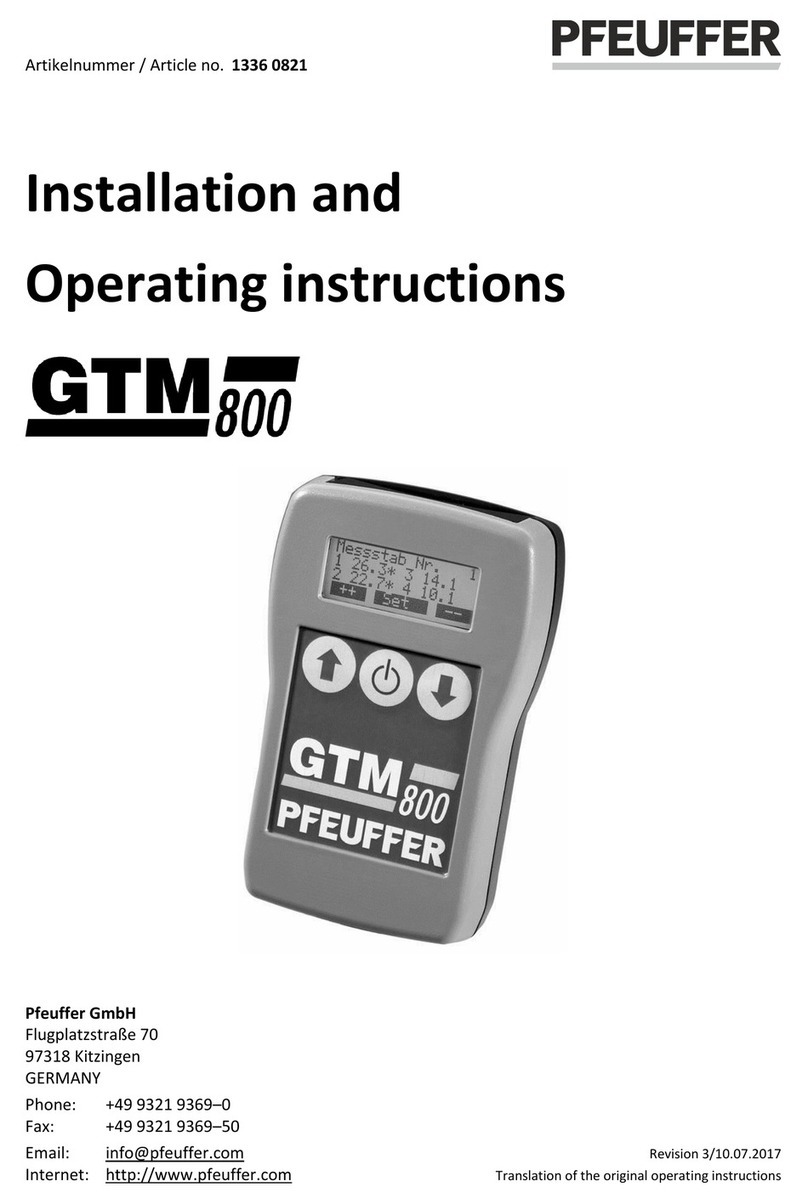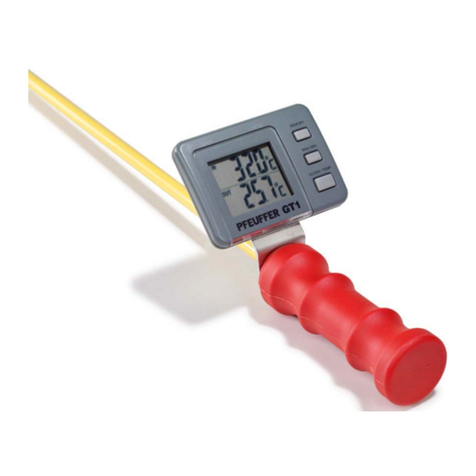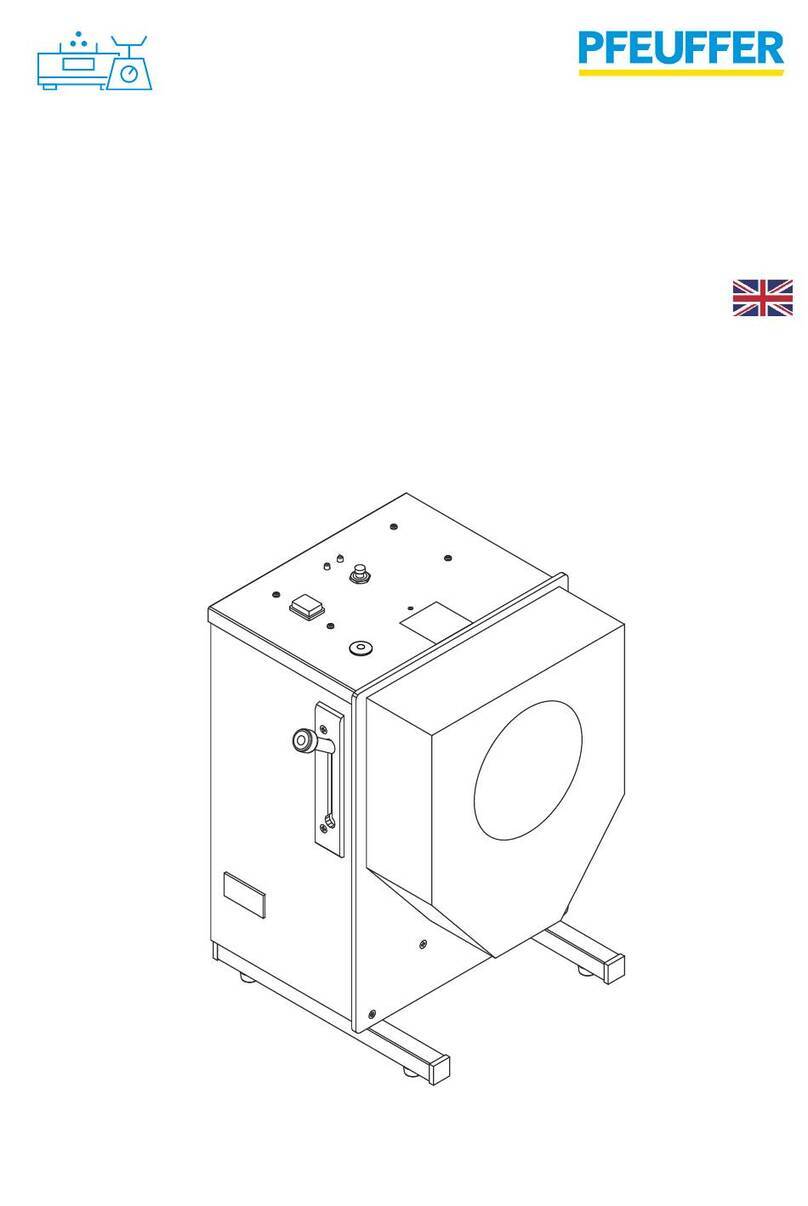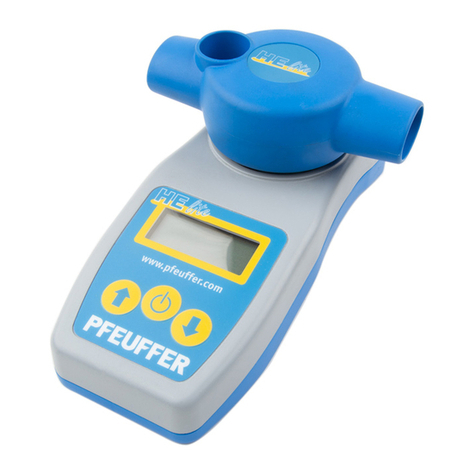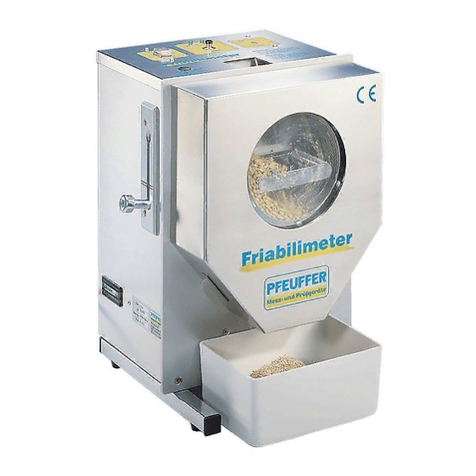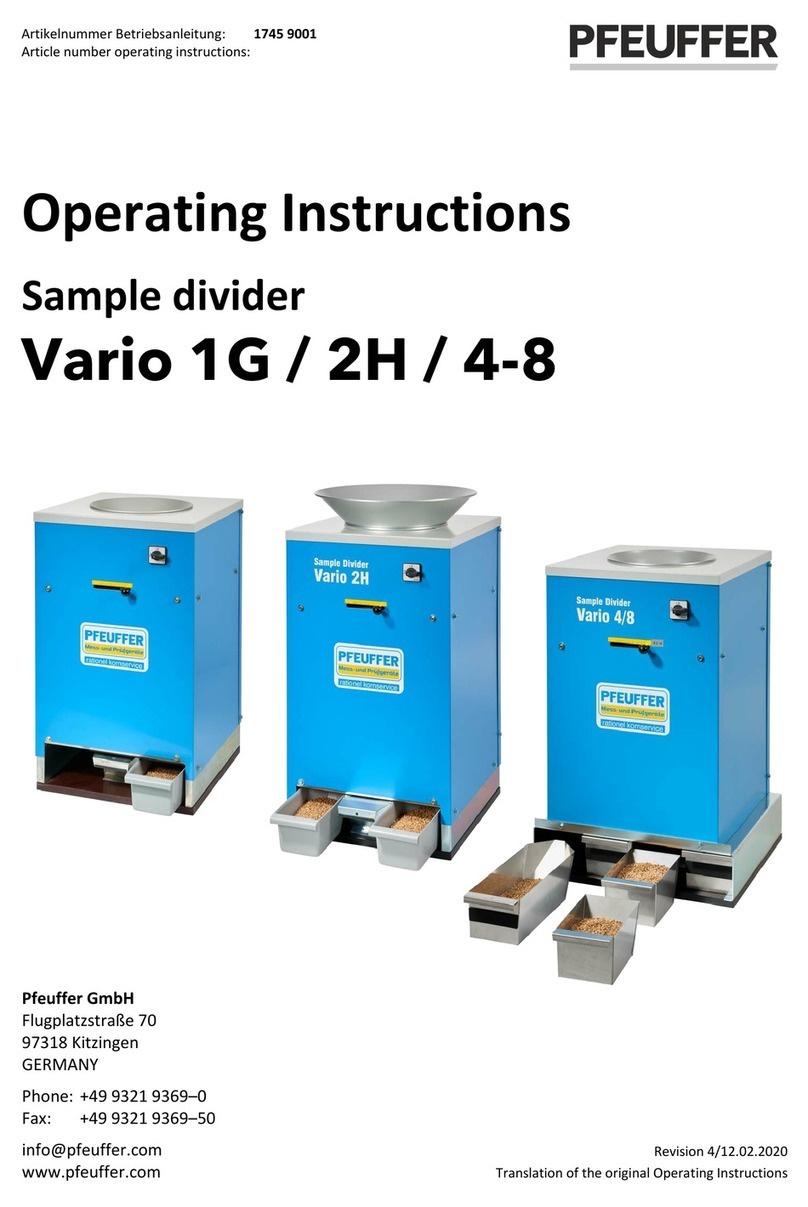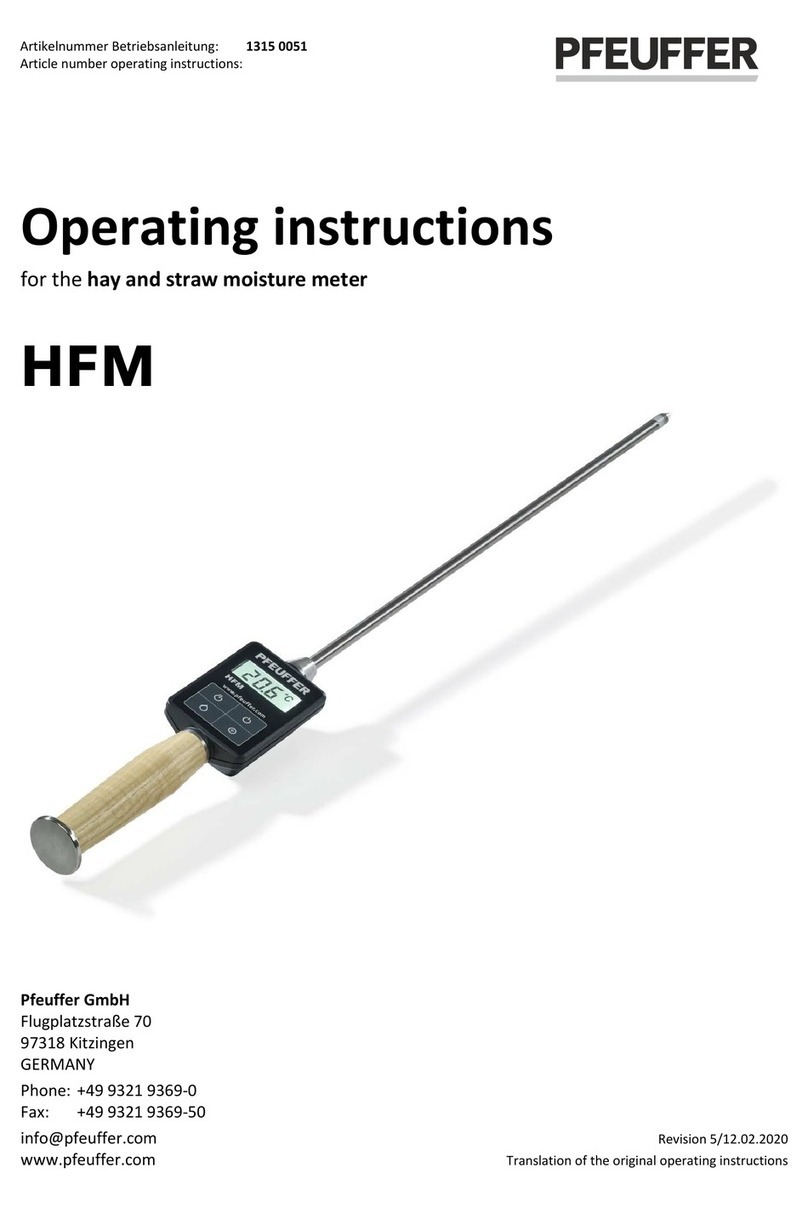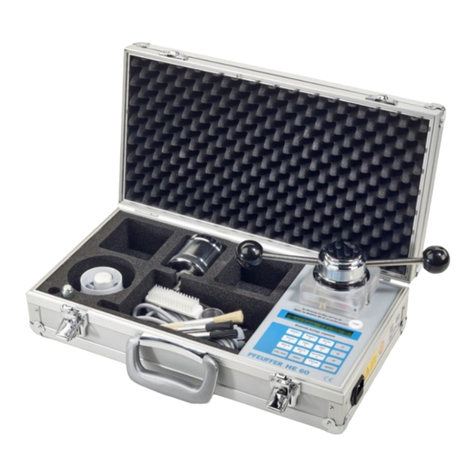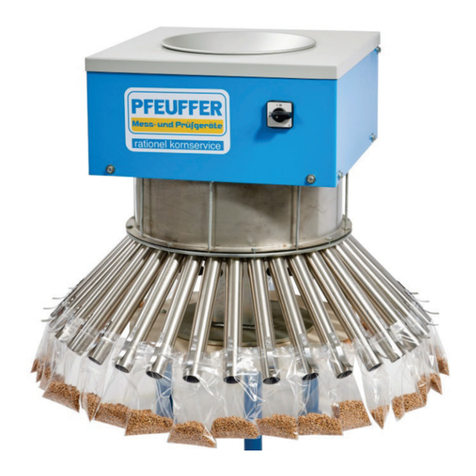
Revision 3 | Granolyser / Granolyser HL operating instructions
1Introduction ............................................................................................................................ 5
1.1 Designated use................................................................................................................................... 5
1.2 Declaration of Conformity ................................................................................................................. 6
1.3 Structural features of the danger notes ............................................................................................ 7
1.4 Pictograms in the operating instructions........................................................................................... 8
1.5 Identification...................................................................................................................................... 8
2Safety ......................................................................................................................................9
2.1 Built-in safety systems ....................................................................................................................... 9
2.2 Electrical connections ...................................................................................................................... 10
2.3 Connecting USB devices................................................................................................................... 10
2.4 Operating and danger areas on the GRANOLYSER .............................................................................. 10
2.5 Operating and maintenance personnel ........................................................................................... 11
2.6 Safety measures (to be carried out by the owner) .......................................................................... 11
2.7 General safety notes ........................................................................................................................ 12
2.8 Safety tests....................................................................................................................................... 13
2.9 Residual dangers in connection with the GRANOLYSER...................................................................... 13
2.10 Switch-off procedure ....................................................................................................................... 13
3Technical data ....................................................................................................................... 14
3.1 Dimensions and weight.................................................................................................................... 14
3.2 Power supply.................................................................................................................................... 14
3.3 General data..................................................................................................................................... 14
4Delivery, transport and storage .............................................................................................. 15
4.1 Scope of delivery.............................................................................................................................. 15
4.2 Transport and packaging.................................................................................................................. 15
4.3 Intermediate storage ....................................................................................................................... 15
4.4 Transport to the installation site (by the customer)........................................................................ 15
5Installation and commissioning .............................................................................................. 17
6Function ................................................................................................................................ 18
6.1 Components of the GRANOLYSER ....................................................................................................... 18
6.2 Sequence of functions...................................................................................................................... 19
6.3 Reference methods for calibration .................................................................................................. 19
6.4 Products and measuring ranges....................................................................................................... 20
7Operation .............................................................................................................................. 21
7.1 Preparation of a sample................................................................................................................... 21
7.2 Drawer mechanism .......................................................................................................................... 22

